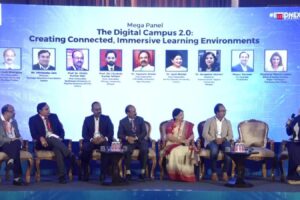
Why Employers Prioritize Skills Over Degrees in the Modern Job Market, ETEducation

By Kuldip Sarma.
“We don’t just need CVs, we need people who can solve problems on the shopfloor”, stated an HR Manager, while conducting a routine recruitment exercise in a factory. Her expression encapsulated the new mood of employers in one sentence. It was a reminder that in the present era, employability is no longer reflected by a certificate, but by the capacity to convert knowledge into practice. Throughout India, this silent change is transforming the way talent is being valued – from credential verification to capability hunting.
From degrees to capabilities
The India Skills Report 2025 places national employability at around 54.8 percent, a better figure than last year, but still evidence that a degree is no guarantee of employment-readiness. The report indicates that the quality of practical skills, rather than academic achievement, decides the employment outcome. The World Economic Forum’s Future of Jobs 2025 corroborates this, with employers anticipating 39 percent of key skills shifting by 2030 and analytical and creative thinking, resilience, and leadership growing most rapidly. In India alone, the report alerts that 63 percent of employees must be reskilled by 2030, highlighting the imperative of lifelong learning.
Technology cycles are one of the reasons that capability has surpassed credentials. Curriculum revisions lag industry conditions, so graduates may find themselves obsolete in a matter of years. Work itself has also become interdisciplinary: a technician requires core data literacy, but a data analyst is aided by domain expertise. Customers also demand quality and speed, requirements only experienced competence can satisfy.
The youth employment challenge
India’s youth bulge makes this transition crucial. The World Bank’s NEET (Not in Employment, Education or Training) statistics indicate a chronic problem in getting young people out of classrooms and into careers. Worldwide, the International Labour Organization estimates that one in four youth, around 262 million in 2025, may be NEET, indicating how high the stakes are for India if it fails to improve opportunities for work.
Apprenticeships and industry partnerships
Indications of change are evident. Apprenticeships, for example, are increasing continuously. Government statistics in July 2024 had 7.46 lakh apprentices in over 47,000 units. When such apprenticeships are co-created with industry and are credit-bearing through Apprenticeship Embedded Degree Programs (AEDPs), students graduate with more than a certificate; they graduate with proof of performance, such as fewer defects or better cycle times. That proof is what employers believe in most.
Industry–academia partnerships, likewise, are increasingly focused on outcomes. Instead of dormant partnerships, successful alliances now entail actively creating skill maps that outline what each new employee should be capable of doing at various points in their work life. Institutions integrating such maps into pedagogy and examination are churning out graduates that can transition more fluidly from classrooms to shopfloors.
Lifelong learning and policy shifts
Upskilling is also moving away from being a single event to an ongoing practice. The Future of Jobs 2025 report identifies that even top-performing teams need to be refreshed every six to twelve months. Employers on the ground confirm this, citing stackable, short-duration programs, ranging from welding procedure retraining to AI prompt-engineering for service staff that assist workers in remaining relevant. Degrees are still important, but more so as entry points. Now what counts is learning agility, the capacity to learn and update skills during the course of one’s career.
Public policy is trying to catch up. Incentivization-linked employment programs have been argued over and implemented to promote recruiting, but as current reports indicate, monetary incentives alone will not close the skills gap. India requires concurrent investment in top-notch training courses, mass-market apprenticeships, and honest skills signaling. Only then will employers recruit talent confidently and youth will believe in credible career prospects.
Towards Atmanirbhar Bharat
Success would be when every student graduates with a portfolio of work done on actual equipment or datasets, rather than generic mark sheets. It would be every class incorporating a “use day” where students show how class ideas can be used directly at work. It would be industries jointly owning and ensuring skill relevance regularly to incorporate and reflect workplace realities. And it would mean individuals moving up professional ladders, where each step is linked to both trending skills and better pay.This approach doesn’t diminish the role of credentials, it streamlines industry-relevant skills with formal degrees.
India is at the crossroads where if it makes capability-first employment a norm, scales up apprenticeships, and inculcates the spirit of lifelong learning, its demographic dividend can become its competitive advantage towards building Atmanirbhar Bharat.
The author is the Co-Founder & Pro-Chancellor of Medhavi Skills University (MSU) and Advisor to NSDC, Govt. of India.
DISCLAIMER: The views expressed are solely of the author and ETEducation does not necessarily subscribe to it. ETEducation will not be responsible for any damage caused to any person or organisation directly or indirectly.
Source link



